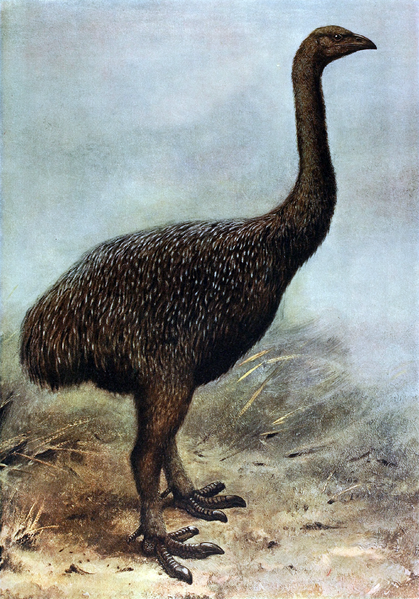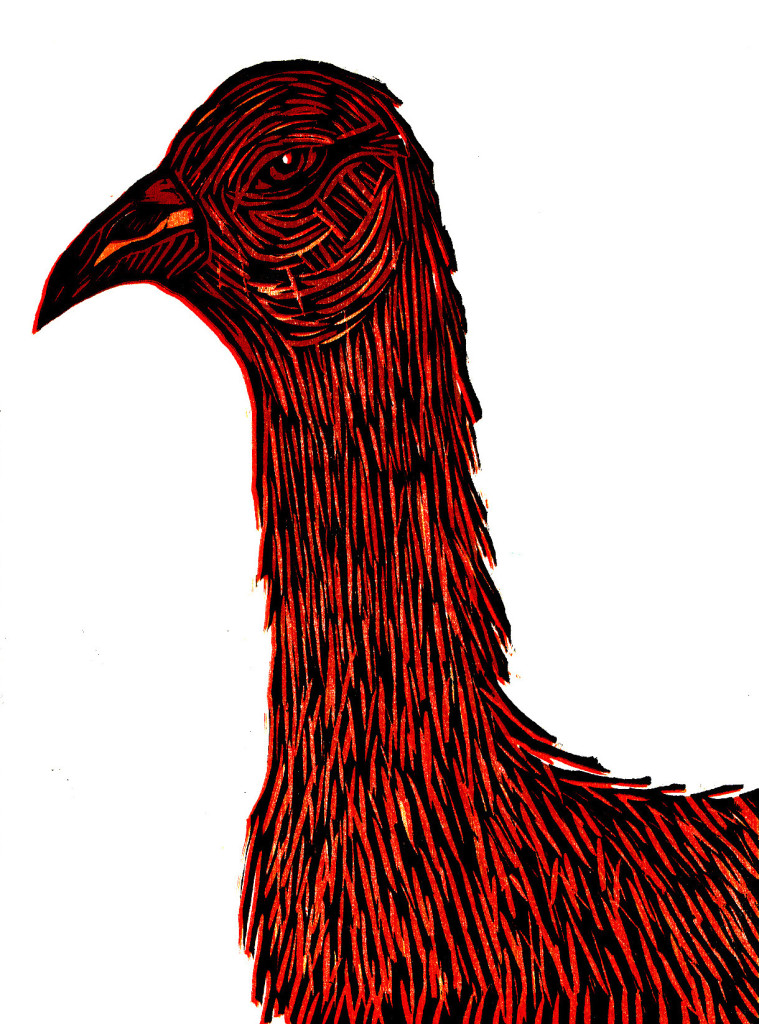
Upland Moa, via Wikipedia
The Moa were a family of large ancient flightless birds endemic to New Zealand. The two largest of the nine kinds found there were about 12 feet tall and weighed in at 500 pounds. They had small heads and were completely wingless, lacking even the stubby vestigial wings of other flightless birds,; they were the dominant herbivores in the area. For millions of years they flourished, then abruptly disappeared, around the time the first Maori settlers reached New Zealand in the late 13th century.

Via Wikipedia. Size comparison between 4 moa species and a human. 1. Dinornis novaezealandiae 2. Emeus crassus 3. Anomalopteryx didiformis 4. Dinornis robustus
The Moa were the last of the Pleistocene megafauna-giant animals including mammoths, mastodons, aurochs, giant sloths and Moas-to disappear from the earth. There’s been a lot of discussion as to why these creatures disappeared, and how much it had to do with humans. In most cases, a combination of factors-the arrival of homo sapiens, climate disruptions, volcanic eruptions, and disease- probably led to the extinction of many of these animals, but the Moa’s disappearance were the exception, and can definitively be tied to overhunting by humans. Archaeologists know that the Maori ate Moa of all ages, as well as the birds’ eggs. We like to think of indigenous people as living in harmony with nature; the Moa complicate that story. The large birds offered sizable meals, and archaeologists have found piles and piles of the birds’ bones in excavated sites. When people arrived, we were the first mammals other than bats the birds had even seen. Researches analyzed DNA from discovered bird skeletons and came to the conclusion that the Moa population was booming right up until the arrival of the Maori, at which point they disappeared very fast. Most, if not all, were gone by 1400.
Even today, though, some people hold out hope that Moas survive somewhere. Gigantic prehistoric birds appeal to the imagination. Some hotels in New Zealand offer to take tourists into the mountains to look for them, though killjoys will point out that these birds are too big to walk around undiscovered for long. Finding a supposedly extinct gigantic prehistoric bird is a tantalizing, though unlikely, idea for many.

